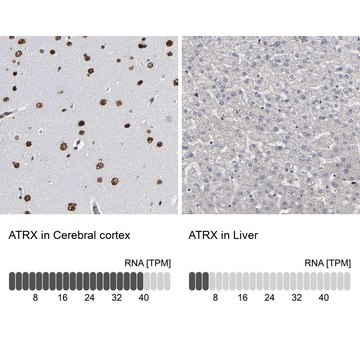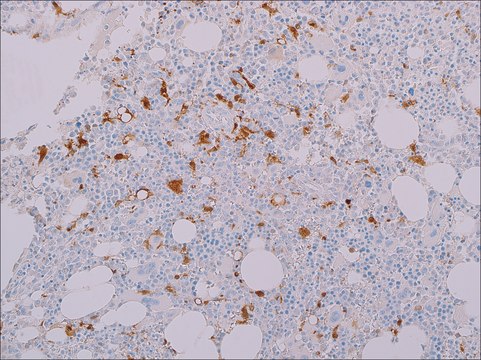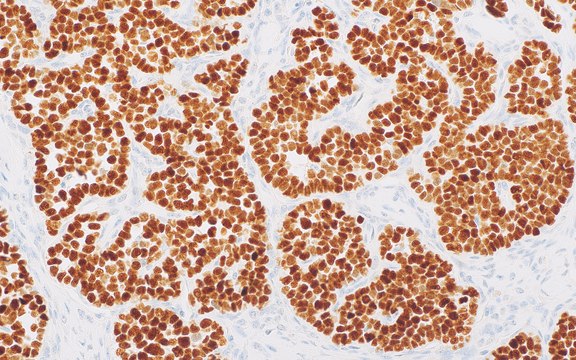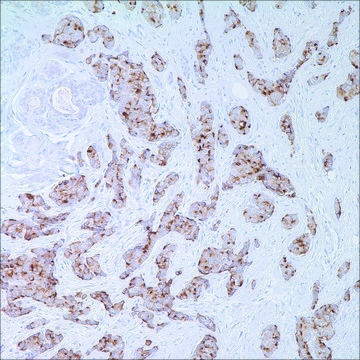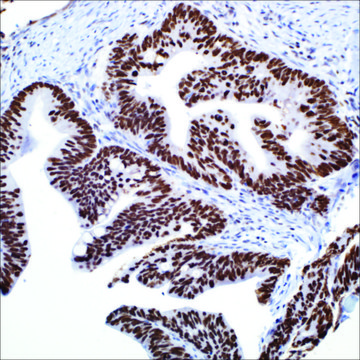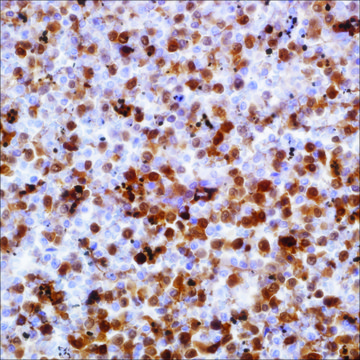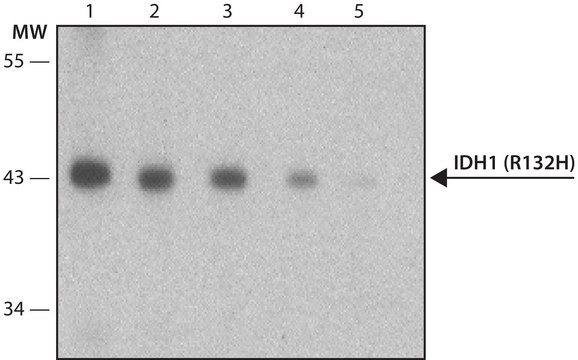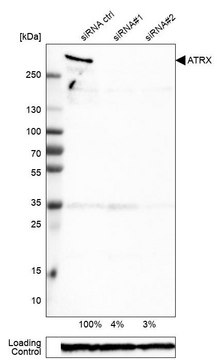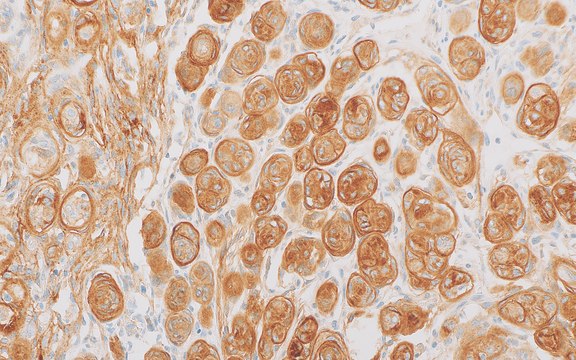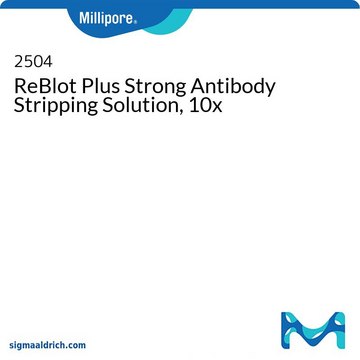485A-1
ATRX Rabbit Polyclonal Antibody
Synonym(s):
ATP-dependent helicase ATRX, X-linked helicase II, X-linked nuclear protein (XNP)
About This Item
Recommended Products
biological source
rabbit blood
Quality Level
100
500
conjugate
unconjugated
antibody form
IgG fraction of antiserum
antibody product type
primary antibodies
description
For In Vitro Diagnostic Use in Select Regions
form
buffered aqueous solution
species reactivity
human
packaging
vial of 0.1 mL (concentrate (485A-14))
vial of 0.1 mL (concentrate (485A-14-RUO) Research Use Only)
vial of 0.5 mL (concentrate (485A-15))
vial of 1.0 mL (concentrate (485A-16))
vial of 1.0 mL (concentrate (485A-16-RUO) Research Use Only)
vial of 1.0 mL (concentrate (485A-17-RUO) Research Use Only)
vial of 1.0 mL (pre-dilute ready-to-use (485A-17))
vial of 7.0 mL (concentrate (485A-18-RUO) Research Use Only)
vial of 7.0 mL (pre-dilute ready-to-use (485A-18))
manufacturer/tradename
Cell Marque®
technique(s)
immunocytochemistry: suitable (formalin-fixed, paraffin-embedded sections 1:50-1:50 (concentrated))
isotype
IgG
control
astrocytoma, brain, glioblastoma, oligodendroglioma
shipped in
wet ice
storage temp.
2-8°C
visualization
nuclear
General description
Quality
Canada - RUO
European Union - IVD
Japan - RUO
Physical form
Preparation Note
Note: This requires a keycode which can be found on your packaging or product label.
Other Notes
Legal Information
Not finding the right product?
Try our Product Selector Tool.
Storage Class Code
12 - Non Combustible Liquids
WGK
WGK 2
Regulatory Information
Choose from one of the most recent versions:
Certificates of Analysis (COA)
Don't see the Right Version?
If you require a particular version, you can look up a specific certificate by the Lot or Batch number.
Already Own This Product?
Find documentation for the products that you have recently purchased in the Document Library.
Our team of scientists has experience in all areas of research including Life Science, Material Science, Chemical Synthesis, Chromatography, Analytical and many others.
Contact Technical Service